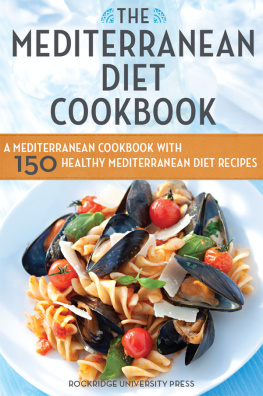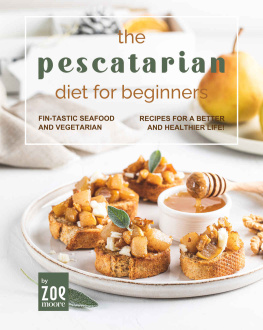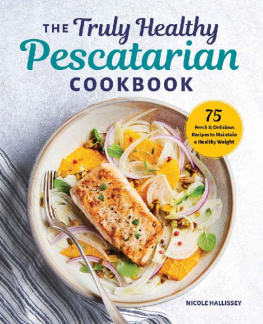Copyright 2020 Hale Walters - All rights reserved.
The content contained within this book may not be reproduced, duplicated, or transmitted without direct written permission from the author or the publisher.
Under no circumstances will any blame or legal responsibility be held against the publisher, or author, for any damages, reparation, or monetary loss due to the information contained within this book. Either directly or indirectly. You are responsible for your own choices, actions, and results.
Legal Notice:
This book is copyright protected. This book is only for personal use. You cannot amend, distribute, sell, use, quote or paraphrase any part, or the content within this book, without the consent of the author or publisher
Disclaimer Notice:
Please note the information contained within this document is for educational and entertainment purposes only. All effort has been executed to present accurate, up to date, and reliable, complete information. No warranties of any kind are declared or implied. Readers acknowledge that the author is not engaging in the rendering of legal, financial, medical, or professional advice. The content within this book has been derived from various sources. Please consult a licensed professional before attempting any techniques outlined in this book.
By reading this document, the reader agrees that under no circumstances is the author responsible for any losses, direct or indirect, which are incurred as a result of the use of the information contained within this document, including, but not limited to, errors, omissions, or inaccuracies.
Table of Contents
Introduction
Whether you intend to cut down the amount of meat in your diet, cut it out completely, or simply wish to add more fish into your meals, The Pescatarian Cookbook is here to be your guide.
In the following pages, you will be introduced to the pescatarian diet and learn how it differs from many of the rigid and extremely limiting diets that have gained popularity. We will discuss the fundamental foods of the pescatarian diet, what you can eat freely and what is best to avoid, and you will come to understand the varied and long-term health benefits of following this diet. Whether you are looking to improve existing medical conditions or are looking to keep your good health for many years to come, a pescatarian diet can be an aid in either circumstance.
In addition to personal health benefits, we will also consider the effects on our environment as a factor in this lifestyle. No matter which protein sources we choose to consume, its important we the options that are most sustainable and environmentally friendly.
To get the best use out of this cookbook, we recommend that you first start with recipes that you find familiar. The world of seafood is vast and can be overwhelming to say the least! We made a point to focus on simple recipes featuring readily accessible fish and other ingredients. However, if you dont have a lot of experience preparing fish or have yet to try many different kinds, it may take a bit longer to become settled into all the nuances the land and sea has to offer. With time though, your eating plan and knowledge of ingredients will become second nature to you, and you will be adjusting and creating new recipes of your own.
As you may have noticed, The Pescatarian Cookbook is recipe-centric, meaning its content is mainly recipes. The recipes are broken down in to 4 categories:
Breakfasts
Lunches
Snacks
Dinners
Desserts
Many of the lunches can also be used for dinners, and many of the dinners would make for a lovely lunch! Get creative with how you use these recipes and when. Most recipes are written for either 4 or 6 portions, but can be easily adjusted for 1, 2, or a crowd. It may be beneficial to you at first to write out an eating plan for yourself. For example:
Day 1 Breakfast: Cranberry Orange Oatmeal Bites
Day 1 Lunch: Farro Bowls with Broccoli Rabe and Shiitake
Day 1 Snack: Golden Glow Popcorn
Day 1 Dinner: Crispy Ginger Salmon
This will help you to keep track of what youre eating, keep your shopping lists streamlined, provide you with reminders for which recipes leave you with leftovers for lunch the next day, and so on.
Above all, try to put any discouragement in its place. Pescatarianism is truly a lifestyle, not a diet. Its biggest rule is: do not restrict! If you are at a family gathering and red meat is on the menu, dont despair. If Thanksgiving is just not the same to you without turkey, allow yourself to have the turkey. This lifestyle is flexible for those exact reasons, because with permission to indulge occasionally, you are more likely to make healthier eating choices for yourself day to day.
Please enjoy the information and recipes contained in these pages and use The Pescatarian Cookbook in whatever form or fashion suits you. In correlation to its namesake diet, this book is intended to be flexible, adaptable, and customizable for you!
The Pescatarian Lifestyle
Fish has been a staple of diets around the world for centuries, as the sea has provided for humankind long before the dawn of agriculture and livestock farming. It is well known that cultures whose diets are rich in seafood tend to be healthier, live longer, and be more environmentally friendly than others.
The pescatarian diet is more than just a set of guidelines for meals, its a lifestyle. Simply, it is a fish-based diet where the only guidelines are to avoid red meat, poultry, and pork. Though it is fish-centric, the idea is not to eat fish at every meal, rather to supplement with other protein sources such as dairy, eggs, legumes, whole grains, nuts, and seeds. The diet also includes plenty of fruits, vegetables, and healthy fats and oils. Below is a list of foods that form the core of the pescatarian diet:
Fish
Shellfish
Yogurt
Cheese
Milk
Eggs
Beans and legumes
Tofu
Nuts and seeds
Vegetables
Fruit
All grains (i.e., Flours, whole-grains, bread, quinoa, rice)
Fats (olive oil, avocado, coconut)
This is by no means a list of the only foods you can eat, rather, this is a list of foods that will serve as the pillars of your meals. This flexibility is an important pillar of the diet on its own. Ease of commitment makes it easier to stick to a lifestyle choice such as pescatarianism, which is key to long term health. As any health-conscious person knows, the difficulty of adhering to a highly restrictive diet is the one thing that most often ends in failure. Prolonged restriction leads to over-compensation later and often dieters will find they lose more progress than they gained in the first place. The pescatarian lifestyle aims to avoid that dilemma by skipping over the rigidity in the first place.
Aside from the obvious health benefits of a trimmer waistline and excellent nutrition that is provided by a pescatarian diet, the medical benefits of this lifestyle are broad. This diet is of course high in fish and seafood, where long chain omega 3 fatty acids are found. These nutrients are excellent for heart health and reducing risk of coronary diseases. Data also indicates that limiting red meat intake offers protection against certain types of cancer, as studies have shown that individuals following a pescatarian diet have lower incidence of colorectal cancer. The pescatarian diet is also an excellent weapon against inflammation of all types. As with other plant-based diets, pescatarianism is high in flavonoids and other antioxidant agents. These agents fight inflammation and have been shown to have anti-diabetic properties as well. In fact, studies have shown that among a wide range of dietary patterns, those individuals following a pescatarian diet had the highest flavonoid intake of all.




